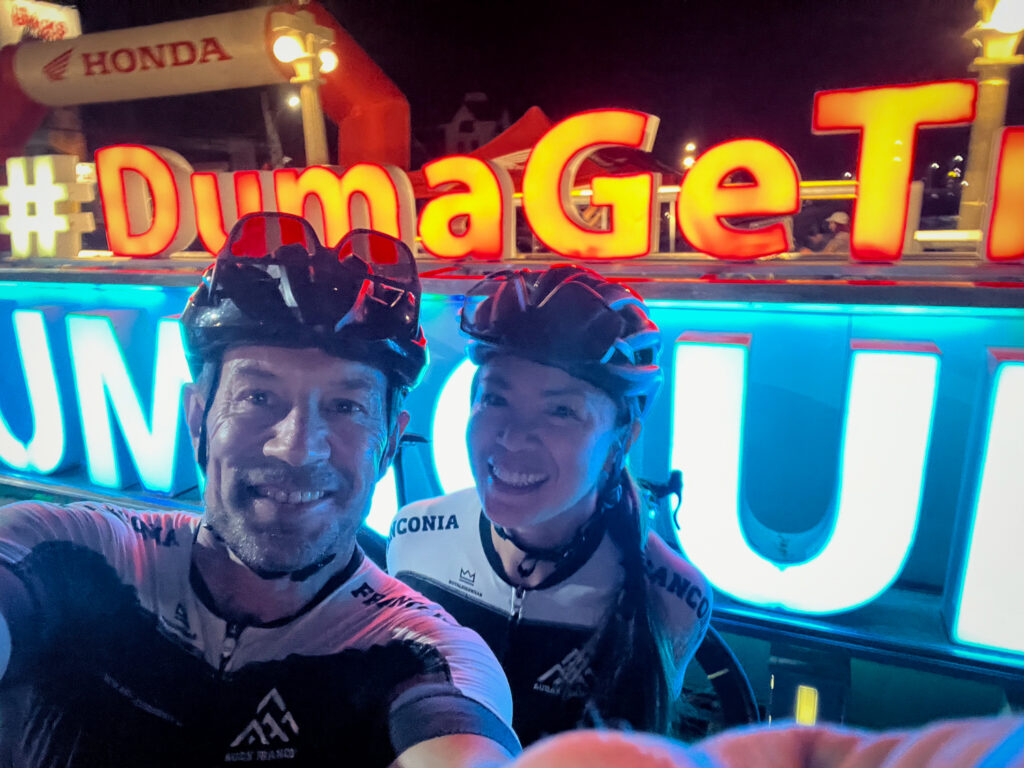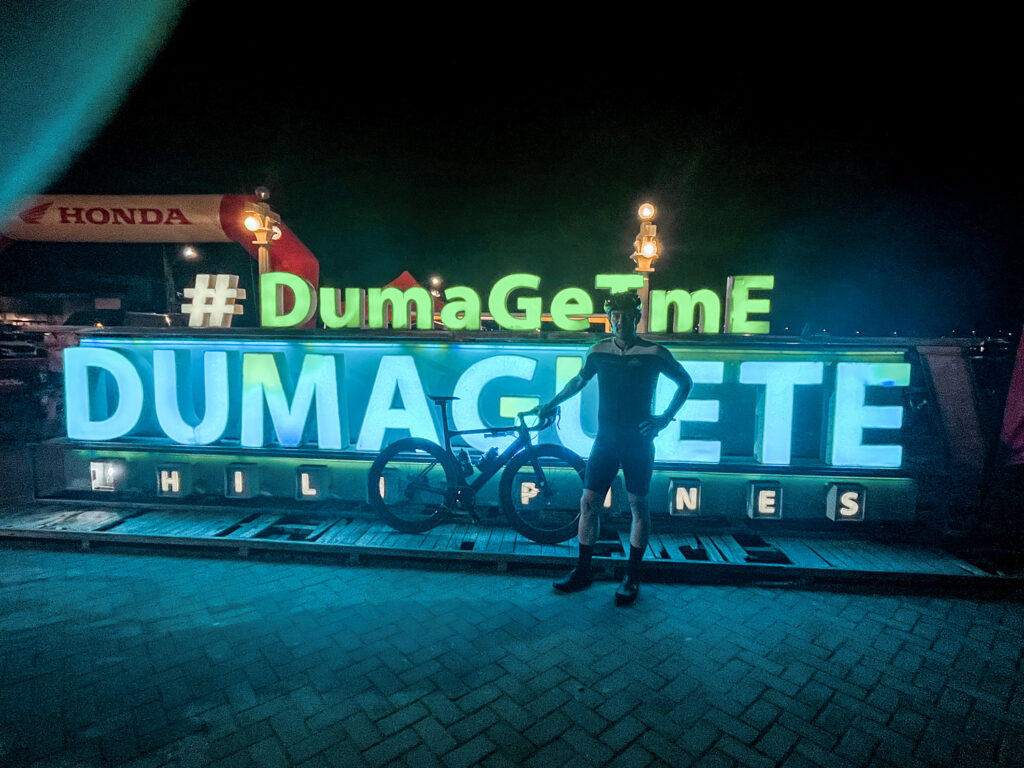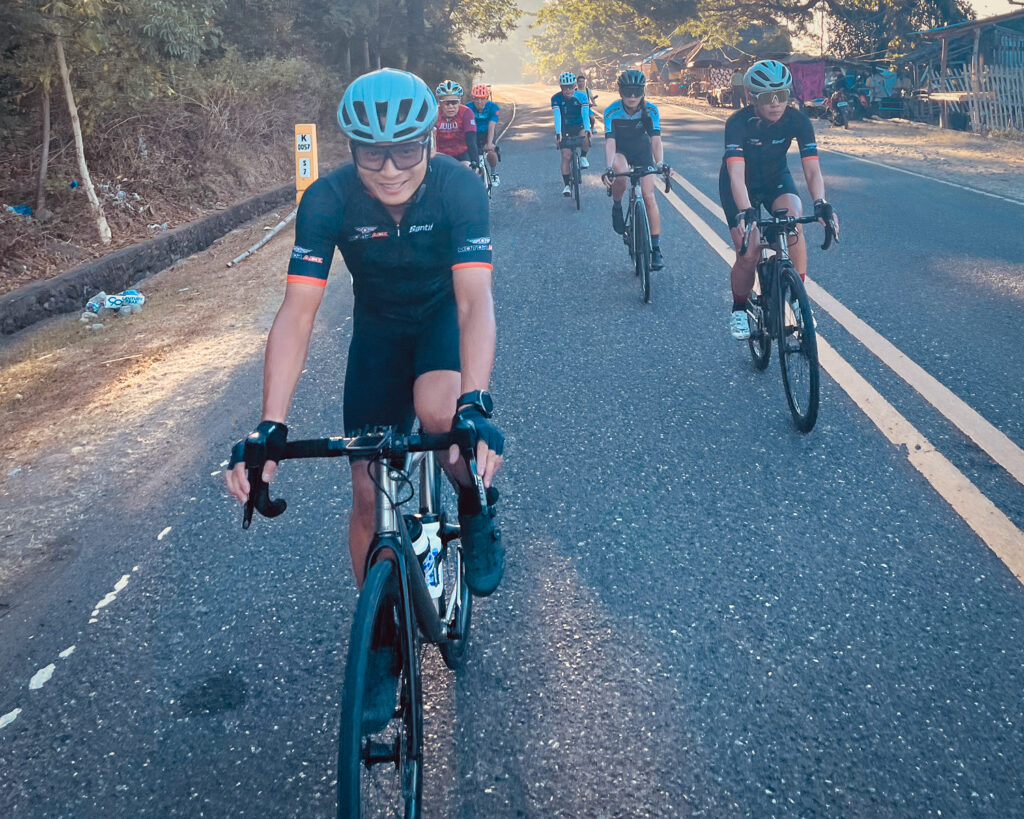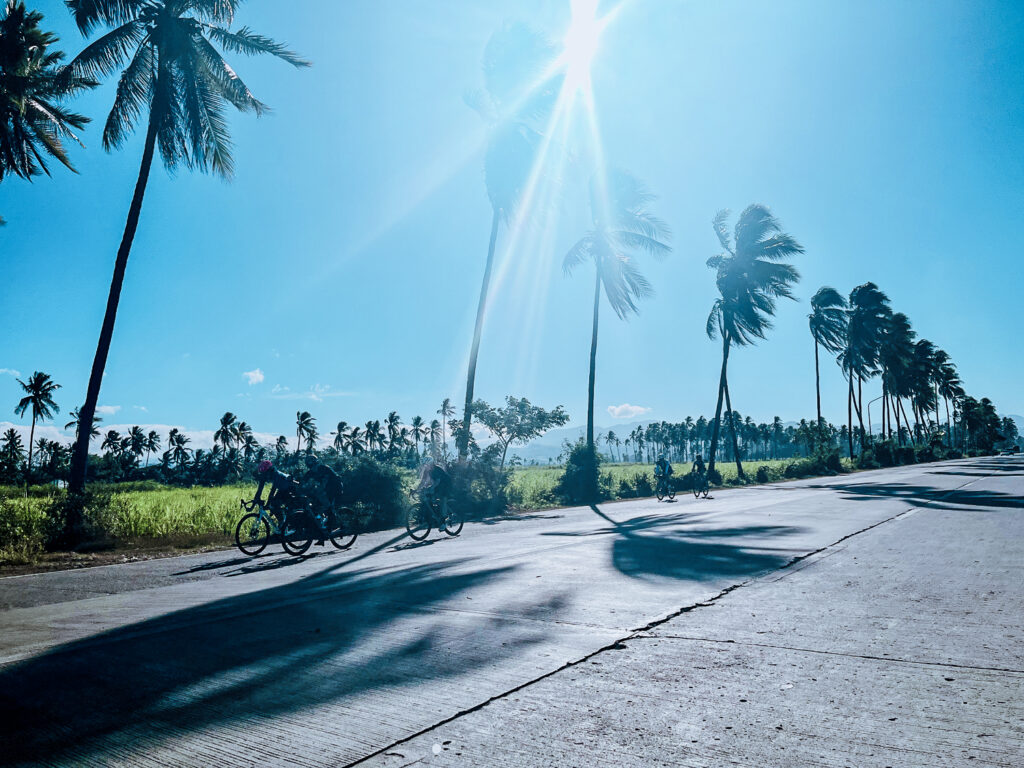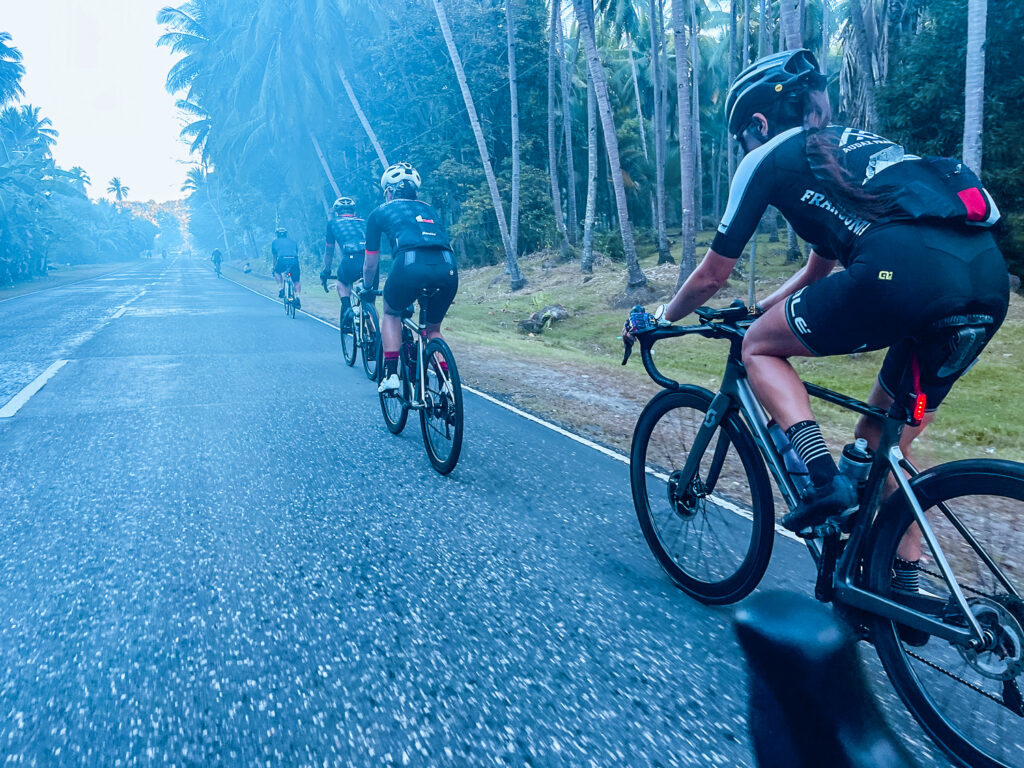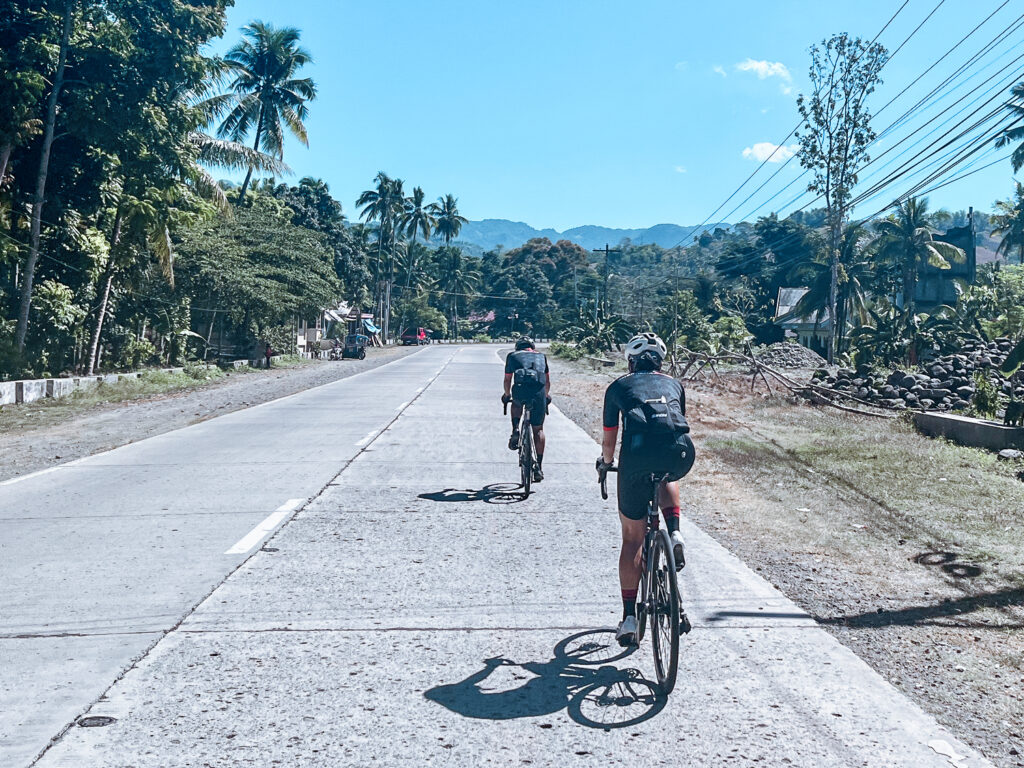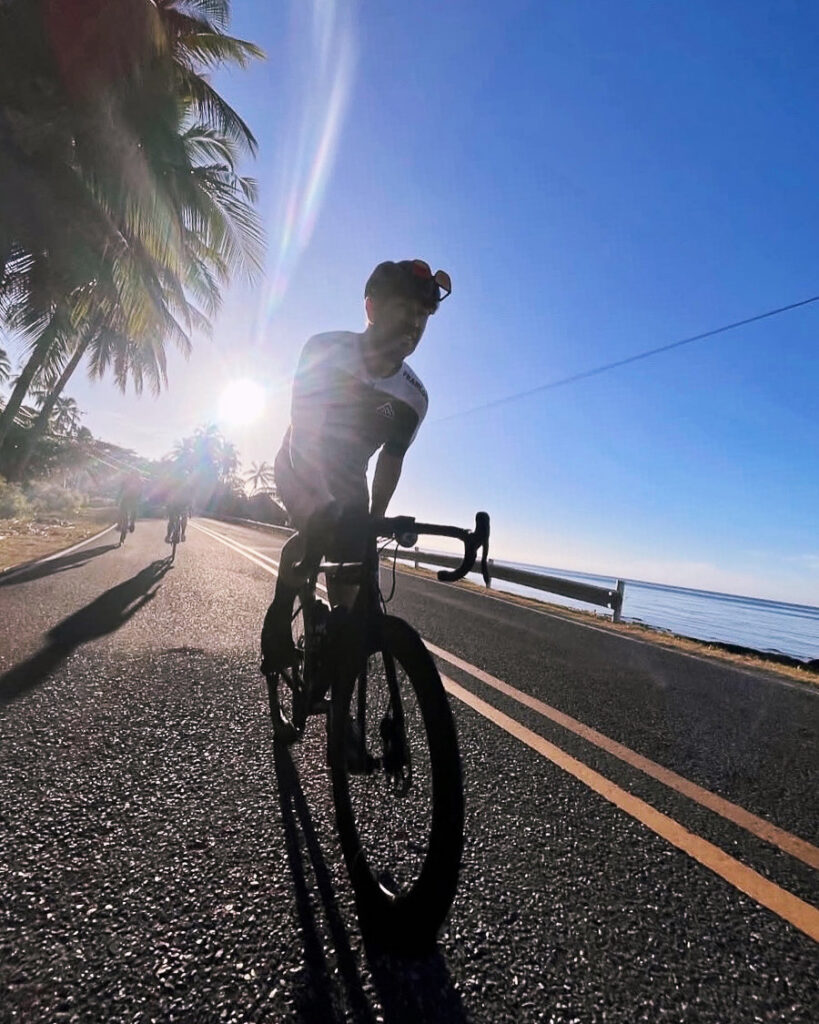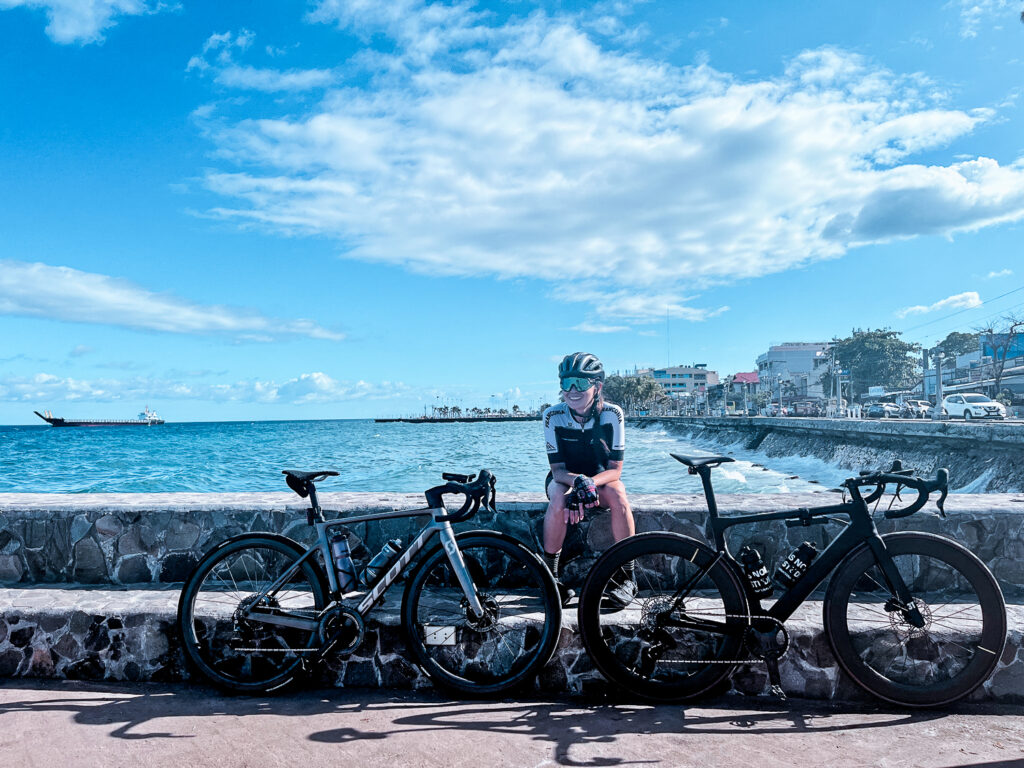„This is not a Race!“ Ich muss ja immer wieder schmunzeln, sobald ich diese Aussage am Start von einem Brevet zu hören bekomme. Natürlich ist ein Brevet kein Rennen, aber du wirst jemanden finden, der dich inspiriert, doch etwas mehr Gas zu geben 🙂 #BTW
Wer hätte gedacht, das ich jemals Brevet in Asien fahren werde. Aber Erstens kommt’s anders und Zweitens als man denkt. In meinem Fall habe ich am 03.02.2024 meinen erstes offizielles Brevet in Dumaguete/Philippinen gefahren. Dumaguete ist die Hauptstadt der Provinz Negros Oriental, eine weitere Insel der Philippinen und um einiges größer als Cebu. Nachdem ich bereits auf den Inselns Cebu, Bohol, Siargao und Bantayan mit dem Rad unterwegs gewesen bin, war ich neugierig auf die nächste Insel und welche Erfahrungen ich dort als Radfahrer machen werde. Was wirklich angenehm auf Negros ist, sind die Straßen und deren Beschaffenheit. Das war wohl der signifikanteste Unterschied zu den Inseln, die ich bisher besucht und “befahren” habe. Wirklich guter Straßenbelag, alles ein wenig sauberer und der Verkehr ist weniger stressig dort. Manchmal hatte ich nicht das Gefühl, auf den Philippinen zu sein 🙂
🇬🇧 “This is not a race!” I always have to smile when I hear this statement at the start of a brevet. Of course, a brevet is not a race, but you will find someone who inspires you to push a little harder 🙂 #BTW
Who would have thought that I would ever ride a brevet in Asia. I rode my first official brevet in Dumaguete/Philippines on 03.02.2024. Dumaguete is the capital of the province of Negros Oriental, another island in the Philippines and a lot bigger than Cebu. Having already cycled on the islands of Cebu, Bohol, Siargao and Bantayan, I was curious about the next island and what experiences I would have there as a cyclist. What is really pleasant on Negros are the roads and their condition. That was probably the most significant difference to the islands I have visited and “cycled” on so far. Really good road surfaces, everything a little cleaner and the traffic is less stressful there. Sometimes I didn’t feel like I was in the Philippines 🙂

Unser Start war Samstag um 5 Uhr morgens – früh aufstehen um 4 Uhr. Die Hölle für mich. Alles vor 6 Uhr ist mitten in der Nacht für mich. Überraschenderweise starten wir pünktlich, exakt um 5 Uhr 🙂 Es machen sich ca. 125 Starter auf den Weg. Einige für die 100 KM, wir für die 200 KM und weitere Starter für die Distanz über 300 KM. Bis wir die Stadt Dumaguete verlassen, rollen wir gemütlich durch die Dunkelheit. Als würde dann jemand die Glocke läuten, überholte mich Mauio mit dem Zuruf “Where is the Race?!” 🙂 Ab hier war es vorbei mit gemütlichen Rollen. 😀
🇬🇧 Our start was Saturday at 5am – getting up early at 4am. Hell for me. Anything before 6am is the middle of the night for me. Surprisingly, we start on time, at exactly 5 am 🙂 Around 125 starters set off. Some for the 100 km, us for the 200 km and other starters for the distance over 300 km. Until we leave the city of Dumaguete, we roll comfortably through the darkness. As if someone was ringing the bell, Mauio overtook me with the shout “Where is the race?” 🙂 From here on, the leisurely rolling was over. 😀
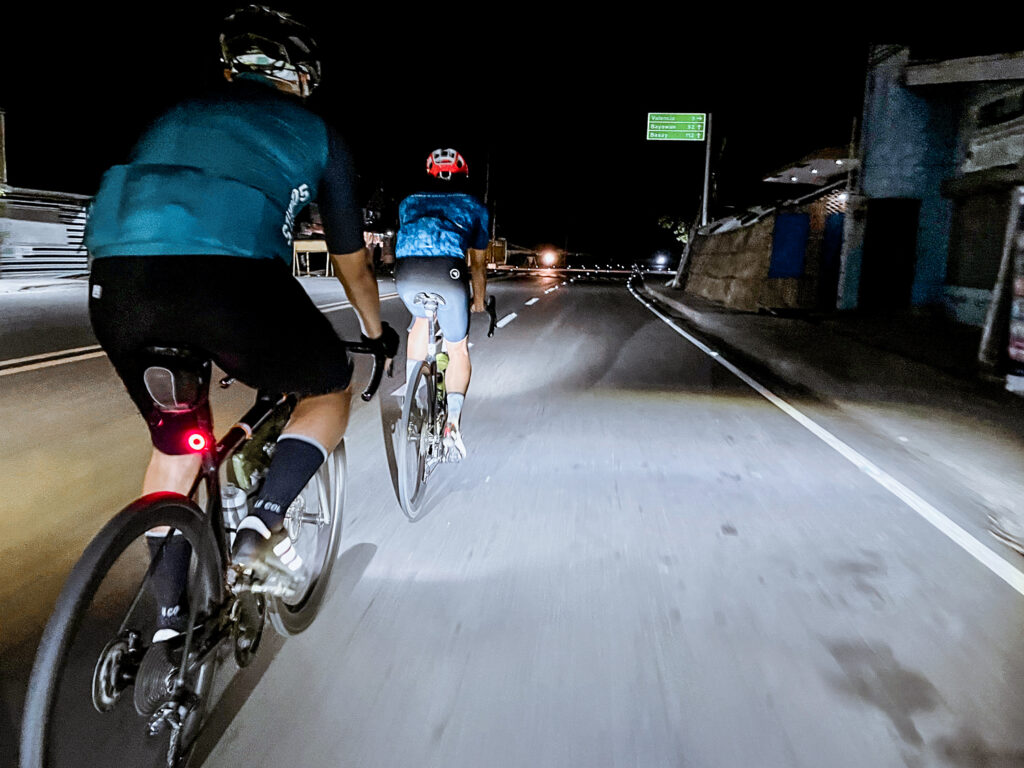
Die ersten 25 km sind flach, mit Rückwind lässt sich hier richtig gut Tempo machen. Kurz nach dem Ort Mayabon kommt eine 6 km lange Steigung über den Berg und die Gruppe zerplatzt in seine Einzelteile. Oben angekommen wartet bereits eine rasante Abfahrt und überraschenderweise sind wir bereits bei CP1 angekommen und haben die ersten 50 Kilometer auf dem Tacho. Checkpoints sind hier mit Helfern besetzt, so wie man es von PBP kennt. Anscheinend gibt es noch motivierte Menschen hier. In Deutschland suche ich manchmal das gelbe Haus hinter der großen Eiche 😉 Am Checkpoint gibt es Wasser und Pocari (Pocari Sweat is a Japanese sports drink), für das Essen sind wir wohl zu früh hier 🙂 Wie üblich, versucht man nur eine kurze Pause zu machen.
🇬🇧 The first 25 km are flat, with a tailwind you can really pick up the pace here. Shortly after the village of Mayabon, there is a 6 km climb over the mountain and the group bursts into pieces. At the top, a rapid descent awaits and, surprisingly, we have already arrived at CP1 and have the first 50 kilometers on the clock. Checkpoints here are manned by helpers, as I know it from PBP. Apparently there are still motivated people here. In Germany, I sometimes look for the yellow house behind the big oak tree 😉 At the checkpoint there is water and Pocari (Pocari Sweat is a Japanese sports drink), we are probably here too early for food 🙂 As usual, we only try to take a short break.
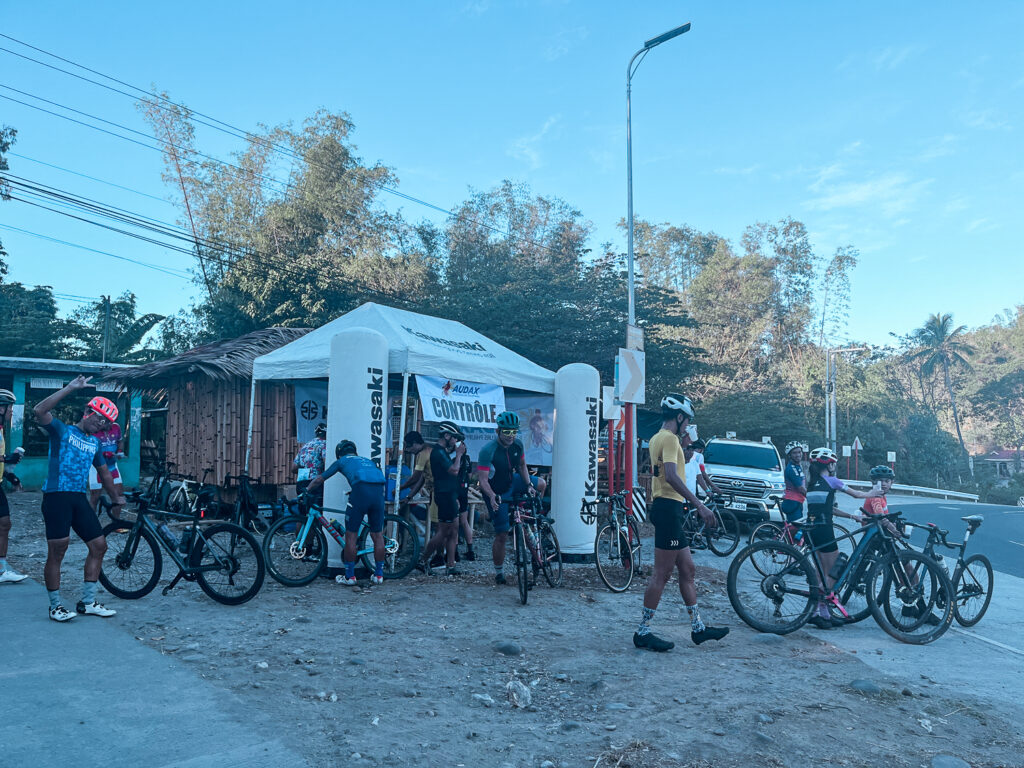
Es folgt eine wunderschöne Strecke entlang der Küste, meist mit atemberaubenden Blick auf das türkisfarbene Meer. Cycling at it best! In einer homogenen Gruppe fahren wir bis Bayawan zum zweiten Checkpoint bei KM 100. Dort den Stempel abgeholt und dann zu 7-Eleven zur Verpflegung. Meinen bisherigen Erfahrungen hier auf den Inseln findest du ca. alle 50 Kilometer einen 7-Eleven. Somit macht es wenig Sinn, die Taschen mit Verpflegung voll zu packen.
🇬🇧 This is followed by a beautiful route along the coast, mostly with breathtaking views of the turquoise sea. Cycling at its best! We cycle in a homogeneous group to Bayawan to the second checkpoint at KM 100, where we collect our stamp and then head to 7-Eleven for refreshments. In my previous experience here on the islands, you will find a 7-Eleven about every 50 kilometers. So it makes little sense to pack your bags full of food.
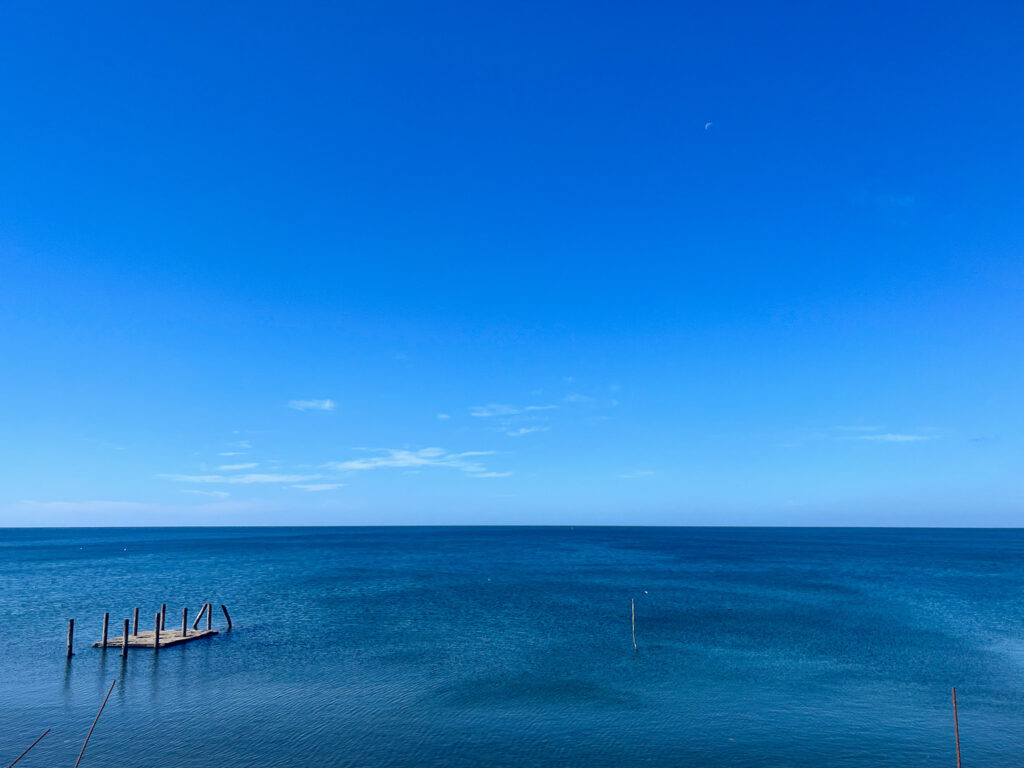
Dann ging es den gleichen Weg wieder 100 KM zurück. Ich habe mich anfangs gefragt, warum man keine Runde fährt und jetzt wieder den gleichen Weg zurück nehmen muss. Carmela, Head of Organisation und Veranstalter der Audax Randonneurs Philippines folgt dem eigentlichen Gedanken von PBP – in eine Richtung bis zum Wendepunkt fahren, und die gleiche Strecke wieder zurück. Historisch bedingt. Gut, das kann dann auch kurzzeitig langweilig sein, weil eine Runde eben eine Runde ist und dadurch mehr zu sehen ist. Und das Fiese daran ist, wir hatten bis KM 100 viel Rückwind, welcher sich natürlich auf der Rückfahrt in Gegenwind zeigt. Und dieser Gegenwind auf dem Weg zurück nach Dumaguete kann ziemlich gemein sein. Der hat uns dann ein wenig ausgebremst, was aber auch kein Schaden war. Gegen frühen Nachmittag sind wir dann wieder zurück in Dumaguete angekommen und haben stolz unsere Finisher-Badges abgeholt.
🇬🇧 Then we went back the same way for another 100 km. At first, I wondered why you don’t do a loop and now have to take the same way back. Carmela, Head of Organization and organizer of the Audax Randonneurs Philippines follows the actual idea of PBP – ride in one direction to the turnaround point, and back the same way. For historical reasons. Well, that can be boring for a short time because a lap is just a lap and therefore there is more to see. And the nasty thing is that we had a lot of tailwind up to KM 100, which of course turned into a headwind on the way back. And this headwind on the way back to Dumaguete can be pretty mean. It slowed us down a little, but that wasn’t a bad thing. We arrived back in Dumaguete in the early afternoon and proudly collected our finisher badges.

Zusammenfassend ist ein Brevet in den Philippinnen nicht wirklich anders, als in Europa. Es wird nach den gleichen Regeln gefahren. Carmela bietet ein perfekt organisiertes Event an. Von der Anmeldung online bis zum letzten Stempel im Ziel.
Im Vergleich zu meinen bisherigen Brevet-Erfahrungen in Europa war für mich hier alles wie üblich, nur ein wenig anders:
- Im Februar einen 200er fahren, mit Temperaturen um die 30 Grad ist schon ziemlich lässig 🙂
- Besetzte Checkpoints macht die Sache persönlicher. So wie ich aus Italien kenne.
- Verkehr ist Verkehr. Hier in den Philippinen aber etwas wilder.
Vielen Dank für die perfekte Organisation und für das außergewöhnliche Erlebnis. Ich denke, das nächste offizielle Brevet fahre ich im März in Bohol. Dann über die 400 KM Strecke und hoffentlich bei den gleichen schönen Bedingungen und wieder als eine Fahrt in einer angenehmen Gruppe.
🇬🇧 To summarize, a brevet in the Philippines is not really any different than in Europe. The rules are the same. Carmela offers a perfectly organized event. From online registration to the final stamp at the finish line.
Compared to my previous brevet experiences in Europe, everything was the same for me here, just a little different:
- Riding a 200 in February, with temperatures around 30 degrees is pretty cool 🙂
- Manned checkpoints make things more personal. Just like I know it from Italy.
- Traffic is traffic. But a bit wilder here in the Philippines.
Many thanks for the perfect organization and for the extraordinary experience. I think I’ll do the next official brevet in Bohol in March. Then over the 400 km route and hopefully in the same beautiful conditions and again as a ride in a pleasant group.
Route & GPX via Strava
Pictures & Impressions
